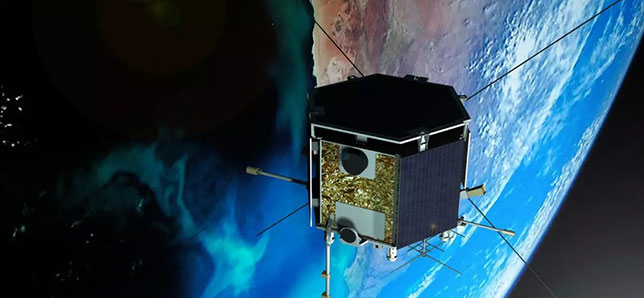In 2013, researchers at the University of Calgary launched a satellite into space to gather information in order to better understand space weather. The CASSIOPE (Cascade, Smallsat and Ionospheric Polar Explorer) satellite was originally supposed to be orbiting Earth for about two years.
“18 months was the operational plan,” said Andrew Howarth, the satellite’s project and operations manager, “but it’s going to be up there closer to 20 [years]… Because the spacecraft after 13 months was working so well, long story short we were able to…keep the project going,” he said.
Ten years later, the CASSIOPE satellite is still operating in space and Dr. Andrew Yau, the principal investigator of the project, attributes that largely to its build quality.
“I think ultimately it boils down to the fact that the overall satellite as well as all its individual components and subsystems have been much better built than originally planned and designed,” he said.
Dr. Howarth doesn’t discount that a bit of luck was involved as well. “The spacecraft has had failures on board and I think we’re lucky that the failures we’ve had have not been catastrophic,” he added.

In 2016, the satellite lost one of four parts which rotated its camera. “We flew with four, we only needed three so the redundancy helped us and that got us another four years out of it,” said Dr. Howarth.
Then in 2020, the satellite lost a second part which rotated its camera so the camera was stuck facing space “[This] really crippled us [in terms of space weather monitoring],” said Dr. Howarth.
As a result of the breakdowns, CASSIOPE has had to shift its purpose. “It has taken on a new project we didn’t envision,” said Dr. Howarth. “We have repurposed it so it’s turned into a space object hunter.”
Essentially, the satellite is now taking pictures of various space debris, including active satellites, broken down satellites and old pieces of satellites. “It’s a field of study that’s becoming more paid attention to, so we’ve made [some of] our instruments useful for that type of work, but we are still operating other instruments for their intended purpose [to monitor space weather],” he explained.
What’s next for CASSIOPE
When the satellite was initially launched, the team expected it to stay in the atmosphere for seven or eight years before reentering the atmosphere, Dr. Howarth said.
During reentry, the satellite descends from orbit and burns up, he explained.
But the sun’s lower-than-usual solar output caused the satellite to stay higher in the atmosphere, changing it’s date of reentry, he explained.
“My best projection of reentry is 2028-2029, five years from now,” said Dr. Yau.
“It could certainly die tomorrow or it could last until it reenters,” said Dr. Howarth. In any case, whether the satellite is functioning or not, it will stay in orbit until it reenters the Earth’s atmosphere.